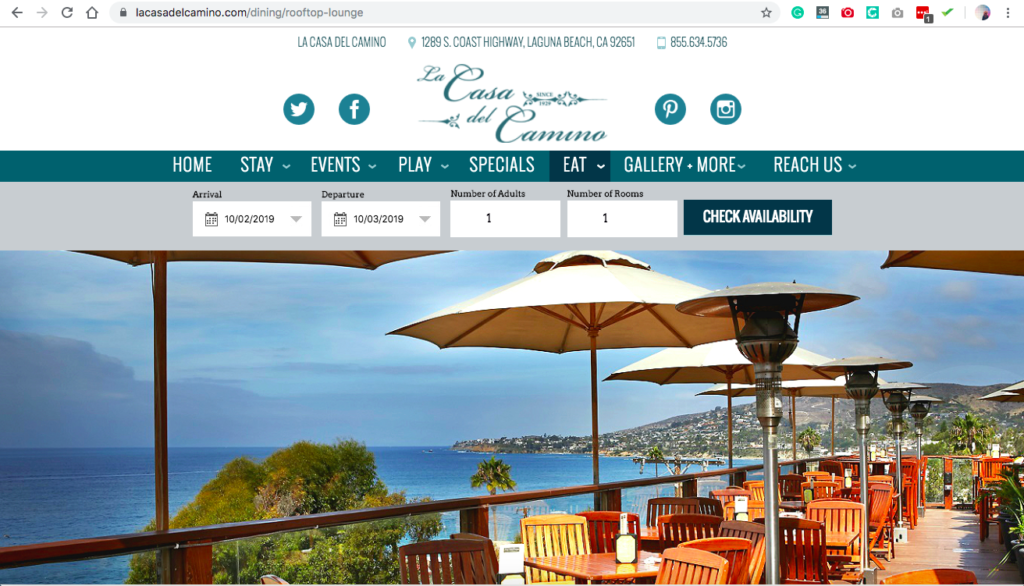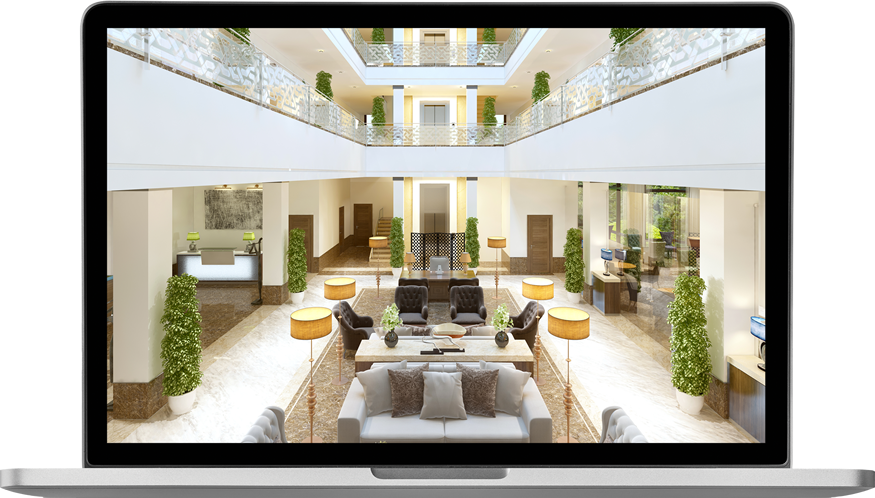You have taken beautiful photographs of your property, written thoughtful descriptions about your rooms, and created a website to tell guests about your hotel. After all that, for some reason, your site is still not appearing in a Google search. Why? Well, to create an authoritative website there are a few very important steps one must take to properly optimize it for search.
What gives a website authority in Google? To explain what Google looks at when choosing which websites to put on the first search engine results page and which ones get buried, we have to go back to the beginning. When Google first launched they had a unique metric for deciding a website’s authority called PageRank.
PageRank was designed to work similarly to citations in a research paper in college. When more websites cite your website, the better your PageRank score would be. From there, pages with more authority passed that along to websites they linked to. For example, being cited in Harvard Research versus a citation in Steven’s 9th-grade science paper gives you more clout.
As Google continued to focus on user experience and the quality of the sites they were showing searchers, they began to focus on a plethora of other signals outside of PageRank. Today there are over 200 different signals Google uses to decide a website’s authority, but there are six major ways to improve your rankings quickly.
What Role Does Meta Data Have?
Meta Titles and Descriptions are what Google uses in the search results pages to display your hotel’s website. These are incredibly important in showing Google what the page is about. We use keyword research to help identify the right words to use in our meta titles and descriptions. Keyword research allows us to identify opportunities and lock in a strategy for a page. After identifying the keyword best suited for your landing page, you will want to fit it into your title tag. For example, the Magnificent Mile Hotel’s home page keyword strategy is “Magnificent Mile Hotels.” This keyword has about 5,400 searches a month. With that data in mind, their title tag also features this keyword to make sure Google knows that this hotel is located on the Magnificent Mile in Chicago. Along with a well-written title tag, you will want the meta description to also feature variations of your keyword. The Cambria Chicago Mag Mile’s meetings page is a great example of a well-written meta description. It reads “Experience an unforgettable event in downtown Chicago when you reserve the gorgeous meeting space at the Cambria Chicago Magnificent Mile.” The description mentions “event in downtown Chicago” and “meeting space” which further supports the title tag. It also is within Google’s character limit of 150 characters. When writing meta descriptions you want to include keyword variations, and be enticing to prospective guests, while staying within 50-150 characters so it fits in the search results. If it is outside the character scope Google will take the liberty of cutting off your meta description.

How are Image Alt Tags Used By Google?
Image Alt tags (also known as alt text, alt descriptions or alt attributes – among other names) are descriptions of the function of the image on the page. Essentially, they explain what is going on in the photo and are mainly used for site readers. We can use these alt tags as a way to describe the image and associate the images to our keyword strategy. If we take a look at Le Casa Del Camino’s Rooftop Lounge page, there is a beautiful image of the hotel rooftop views of Laguna Beach California. When we inspect the image, the alt tag it is, “enjoy rooftop dining at this laguna beach hotel.” This tag describes the intent of the image and fits in “rooftop dining” and “laguna beach” for context for those potential keywords. When writing alt tags, they do not all need to be crammed with keywords, but they do need to be unique and a good representation of the image.

Does Quality Content Matter in Ranking?
As we always say content is king in SEO. Landing page content optimization can include linking to authoritative sites, incorporating different types of media, like videos, and, most importantly, interlinking to relevant pages within your own website. While optimizing your website, always remember the intent of your website: providing potential guests with information. You want to make sure you are answering every question and every desire with quick and well-delivered information. This is where SEO tools like SEMRush can come in handy. This gives you an idea of topics you can share in the page’s copy. Such as when writing for your hotel’s amenities page, if your hotel has an indoor pool and when you look at SEMRush and that’s a term with a lot of search volume you may want to have a bigger highlight for that amenity. Looking at the content your search competitors are creating and giving more detail is another great way to outrank them in search.
Is Site Speed Considered a Ranking Factor?
The Speed at which your site loads should always be something you think about when building new landing pages. Ideally, your website’s landing pages will load at about three seconds and no more than seven for the hospitality industry. Keep your image sizes low and avoid embedding other large files onto the page that will take a while to load and hurt your page speed dramatically. Using tools like GTMetrix is a great way to keep an eye on your site’s load speed and ways in which it can improve.
Should a Site be Mobile Friendly in Order to Rank Well?
70% of internet access in 2018 was done on mobile phones, and it was projected to be 80% for 2019. More and more people are browsing the internet on the go and your hotel’s website needs to keep up. Just this July, Google officially finished rolling out Mobile-first Indexing. In short, Google is now using the mobile version of a site content when evaluating relevance for ranking. So you will want to make sure your website’s mobile version loads quickly and is user-friendly
How Does Google Use Backlinks in Ranking a Web Page?
Of course as the first metric of PageRank, backlinks will always be a signal for Google when identifying the most authoritative websites. So creating a profile of websites linking back to your website will help propel your hotel in the rankings. But gone are the days of collecting as many links as possible that have long lists with thin content. You want to focus your efforts on acquiring backlinks on relevant sites with rich copy on a related topic such as things to do in your hotel’s city, or even the best restaurants to eat at if your hotel has on-site dining. This is where blogger outreach and influencer marketing has really enhanced the way we as SEOs approach backlink acquisition. This eight billion dollar industry not only allows you to reach the eyes of buyers invested in the opinion of these influencers looking to them for advice but it also gives your hotel SEO value though detailed context around the link to your website as well as mention of other attractions and neighborhoods in your city. This idea is known as co-occurrence or co-citation and allows your hotel to potentially rank for terms like “hotels near Wrigley Field” if your Chicago hotel is mentioned as being close to the stadium.
Conclusion
Always keep the experience of your guests in mind. Make sure you do well thought out keyword research for your metadata, optimize your images with alt tags for ADA compliance, and create content that answers every possible question a potential guest might have about your hotel. Don’t forget that make people use the internet on their phones so it is essential that your website load fast and be mobile-friendly, and lastly strengthen your website’s backlink profile and grow your audience with links from relevant bloggers websites. Let Blue Magnet Interactive’s team of SEO experts help you stay on top of the latest trends and changes. Contact us today.




